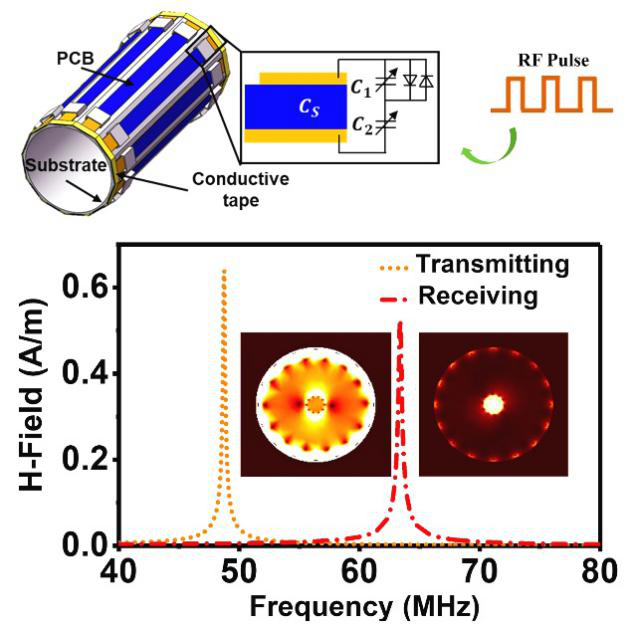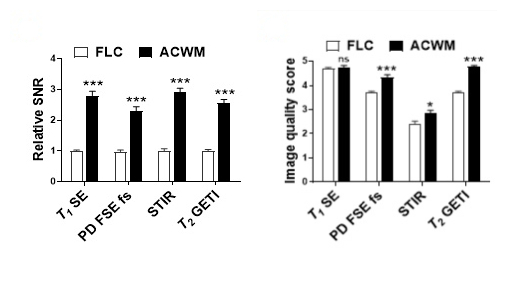
(Translated by YANG.L.Y.)Magnetic resonance imaging (MRI) is one of the high-end imaging modality characterized as non-invasive, multi-parametric and high-resolution. It is widely used in the diagnosis and early screening of tumors, neurological disorder, cardiovascular and cerebrovascular diseases, as well as skeletal and muscular diseases. Recently, multidisciplinary teams from the Department of Diagnostic Radiology of Beijing Tsinghua Changgung Hospital (BTCH), Department of Mechanical Engineering and School of Materials of Tsinghua University, have developed an applicable MRI coil using "metamaterials", which can improve the signal-to-noise ratio by 2-3 folds.

Figure1 Composition,experimental settings and resonant modes of the ACWM
"Metamaterial" is a synthetic material with extraordinary physical properties that natural materials do not possess. In the 1.5T field strength model, the signal-to-noise ratio of the images obtained by the "metamaterial" coil is 2-3 folds higher than that of the conventional surface coil in animal and human tests. It helps physician to increase their confidence in diagnosis, and to detect smaller and earlier lesions. Meanwhile, it can reduce the examination time to 1/3 to 1/2 of original duration, which greatly relieves discomfort of the patients. Notably, the metamaterial MRI coil is intelligent, wireless, passive, and frequency adjustable, which is easily launched to various types of MRI machines without changing any settings. And it can also be expanded for 3.0T field strength models.
This new "metamaterial" MRI coil is the output of collaborative medicine-engineering crosstalk research between the Department of Diagnostic Radiology of BTCH and Department of Mechanical Engineering as well as School of Materials of Tsinghua University. The coil has made several breakthroughs. Firstly, the cylindrical metamaterial configuration is first introduced to solve the problem of uneven enhancement of the metamaterial magnetic field. Secondly, the idea of partially tuned resonance mode control solves the problem of metamaterial interference with the RF emission field. Lastly, a series of clinical tests was performed to validate the clinical applicability of the metamaterial coil.

Figure2: Comparison of relative SNR and image quality score
This technology not only provides a new method to improve the signal-to-noise ratio of magnetic resonance images, but also elicits a novel strategy for the improvement of magnetic resonance coils. It is of significance to improve the international competitiveness of our nation in the field of high-end medical imaging technology. The collaborative team has submitted several domestic and international patent applications, and the work entitled "Adaptive Cylindrical Wireless Metasurfaces in Clinical Magnetic Resonance Imaging". (https://onlinelibrary.wiley.com/doi/full/10.1002/adma.202102469) was published in Advanced Materials (IF 30.8498 in 2020). Mr. Zhonghai Chi, a PhD student of Tsinghua University, Dr. Yi Yi and Dr. Yakui Wang from the Department of Diagnostic Radiology of BTCH share the first authorship. Dr. Qian Zhao and Dr. Zhuozhao Zheng are co-corresponding authors for this work.(Reviewed by LIU.J.)
